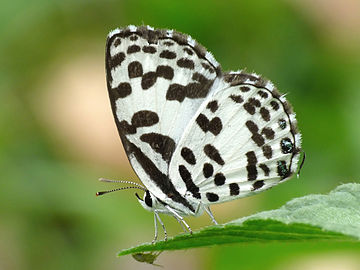Makhtesh Ramon, a cirque measuring 40 kilometres (25 mi) long, 2–10 kilometres (1.2–6.2 mi) wide, and 500 metres (1,600 ft) deep, is the world's largest makhtesh. It is located in Israel's Negev desert, some 85 kilometres (53 mi) south of Beersheba. The makhtesh and surrounding area are home to only one settlement, Mitzpe Ramon, and together form Israel's largest national park.
29 Dec 2014
27 Dec 2014
Lesser Sand Plover
26 Dec 2014
Blackness Castle
23 Dec 2014
Yule log Cake
19 Dec 2014
Striated Pardalote
17 Dec 2014
Victor Baltard
13 Dec 2014
Correa Alba
Correa alba is a shrub endemic to Australia. Reaching some 1.5 metres (4 ft 11 in) in height, this shrub is a hardy species in well-drained situations. The ovate leaves measure 1.5 to 3.5 centimetres (0.59 to 1.38 in) long and 1 to 2.7 centimetres (0.39 to 1.06 in) wide. The flowers, as shown here, are generally white, but may also be light pink. They usually appear between mid-autumn and early winter.
12 Dec 2014
Percival Lowell
Lowell has been described as "the most influential popularizer of planetary science in America before Carl Sagan". His efforts to find Planet X eventually led to the discovery of Pluto, 14 years after his death. Pluto was named partly in recognition of Lowell's efforts, although the Planet X theory was subsequently disproved.
11 Dec 2014
Castalius Rosimon
 Castalius rosimon is a small butterfly in the family Lycaenidae. First described by Johan Christian Fabricius in 1775, the species can be found in South and Southeast Asia.
Castalius rosimon is a small butterfly in the family Lycaenidae. First described by Johan Christian Fabricius in 1775, the species can be found in South and Southeast Asia.10 Dec 2014
Shy Albatross
5 Dec 2014
Grose Valley
The Grose Valley is a rugged valley in the Blue Mountains, New South Wales, Australia, which was formed by the Grose River. The valley is located between the Great Western Highway and Bells Line of Road, the two major routes across the Blue Mountains. Most of the valley falls within the Blue Mountains National Park. On the right side of the image, the Bridal Veil Falls are visible.
Subscribe to:
Comments (Atom)